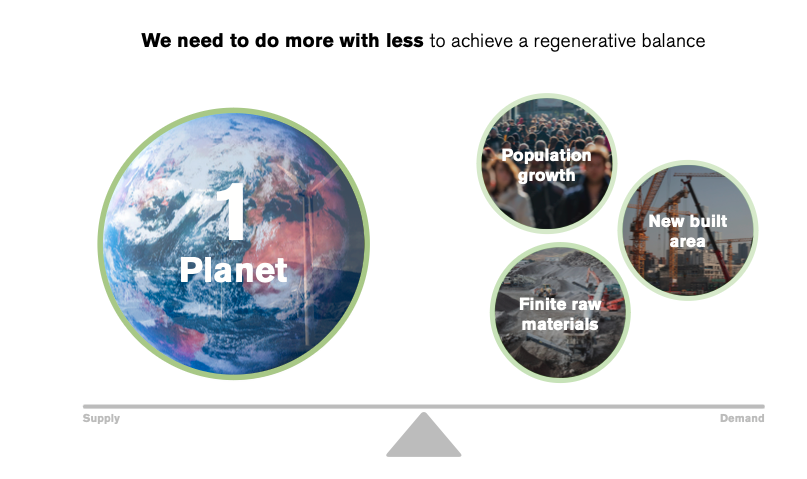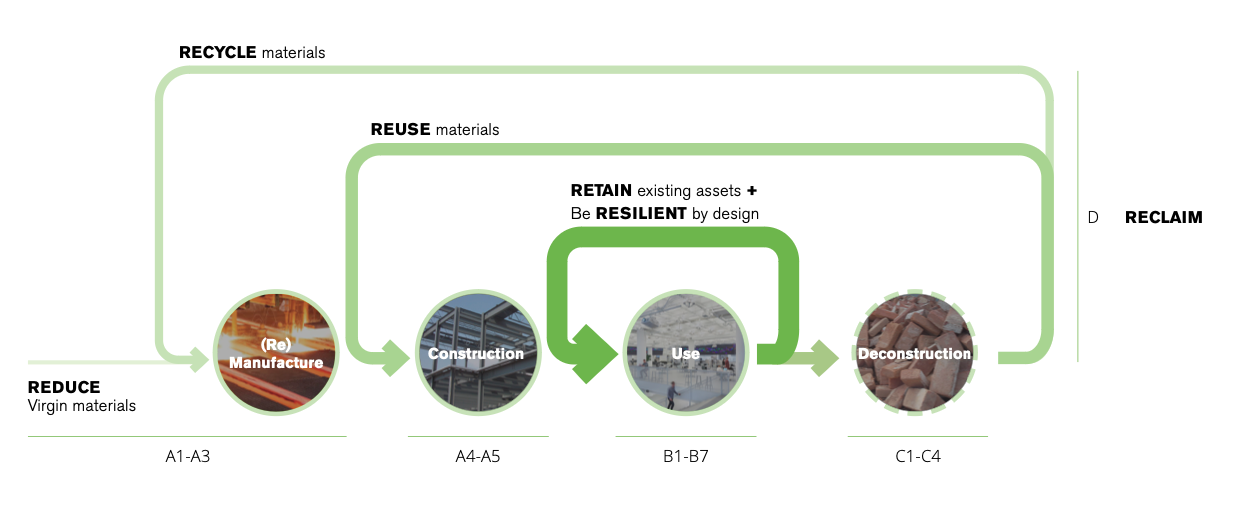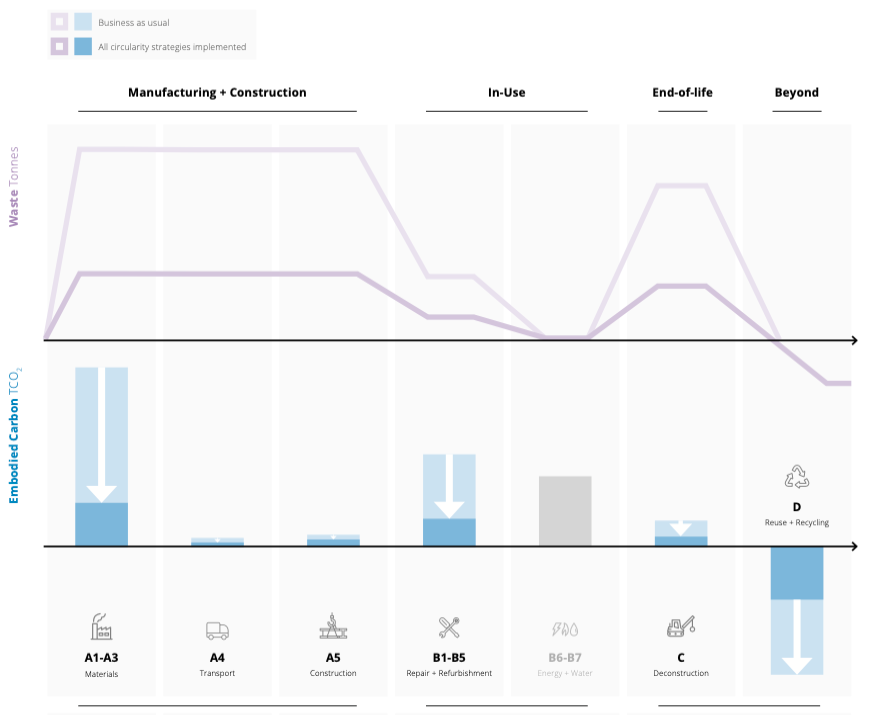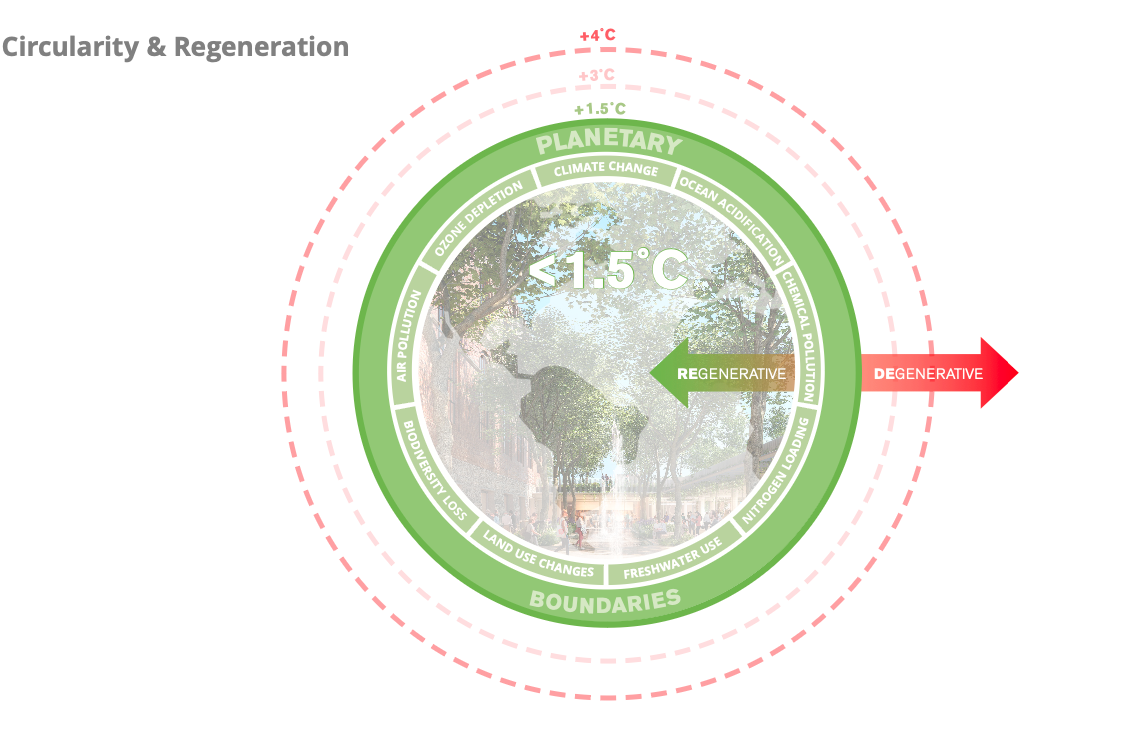This website uses cookies so that we can provide you with the best user experience possible. Cookie information is stored in your browser and performs functions such as recognising you when you return to our website and helping our team to understand which sections of the website you find most interesting and useful.
This thought leadership was written in collaboration between WorldGBC and Foster + Partners: Chris Trott, Partner, Head of Sustainability Group, Cinthia Espino, Associate Sustainability Coordinator, Oli Haddon, Graduate Sustainability Coordinator
This thought leadership was written in collaboration between WorldGBC and Foster + Partners: Chris Trott, Partner, Head of Sustainability Group, Cinthia Espino, Associate Sustainability Coordinator, Oli Haddon, Graduate Sustainability Coordinator
In this thought leadership article, Foster + Partners, a founding partner of the Circularity Accelerator programme, unpacks key terminology around the circular economy, whole life carbon and regeneration, and brings this to life with built environment case studies.
In 2022, a year’s worth of biological resources was used in just 7 months.
This means that humanity’s resource consumption exceeded the Earth’s annual capacity to regenerate those resources. Based on these trends, humanity will need 1.75 Earths[1] to supply the demand for resources this year alone.
To respond to the projected increase in population, 230 billion m2 of floor area (the equivalent of adding a new New York city every month for the next 40 years) will need to be built[2]. To meet this growing demand, the extraction of raw materials, rate of construction and generation of waste are all set to triple by 2100, inducing a predicted rise in global temperature of 2.1 – 2.4˚C above pre-industrial levels, even with binding long-term or net zero targets implemented or with Nationally Determined Contributions (NDCs) alone, respectively[3].
In summary, net zero emissions are a vital part of our climate action targets, however we also need to prioritise the utilisation of global resources. Effectively, in order to limit global temperature rise and resource depletion, we need to do more with less.

Currently, our world is 8.6% circular, meaning that only 8.6% of all materials extracted make it back into our economy after use[4]. Given the issues around resource scarcity, pressure on climate change and the growing demand for building floor area, it is paramount we transition into a circular economy so that we can bring our planet back into balance.
What is the circular economy?
Circular Economy & Circular buildings definition
A circular economy maximises resource efficiency and value utilisation through regenerative design and innovative business models.
The World Business Council for Sustainable Development (WBCSD) defines circularity in a building as one that optimises the use of resources while minimising waste throughout its whole life cycle. The building’s design, operation and deconstruction maximise the conservation of material value over time[5].
Circularity in the built environment must be implemented at community, city and system level – so these core principles also need to be implemented through our infrastructure and all built assets.
Terminology around circularity
Foster + Partners have developed a Circular Economy Framework to monitor, review and guide circularity in projects. Within the Framework, Foster + Partner have established a set of hierarchical strategies that project teams are advised to adopt, for existing assets and new constructions.
Where we have existing buildings, the priority is always to retain them through refit or refurbishment. When new construction is the only feasible option, the priority is to reclaim existing components and reduce the need for new material through reuse and recycling of materials. And provide resilience for the future by enabling flexibility and adaptability, as well as maximising the lifespan of the asset and building elements whilst designing for disassembly.

Circular economy and embodied carbon and regeneration
Circular economy and embodied carbon
Circularity is one of the key enablers for the decarbonisation of the built environment.
Designs that include such principles reduce emissions, costs, and heavy loads to the environment. Circularity and whole life carbon should be addressed simultaneously as focusing on optimising only one of the two can result in negative outcomes for one or the other.
Circular design principles that help to reduce resource intake will lead to reductions in upfront embodied carbon, whilst implementing other circular design strategies like longevity and demountability may result in an increase in upfront carbon but an overall reduction in whole life carbon.
The following diagram shows some of the circular design strategies per life cycle stage that will help in reducing whole life carbon emissions and waste throughout the lifetime of the building.


The adoption of circular economy principles is important not just at a building or city scale but at an industry level as well. Circularity is key in shifting reliance on ‘hard to abate’ sectors such as the cement, steel and aluminium industries, which will find it harder to decarbonise in the near future. By keeping these carbon-intensive materials in constant use through reuse or recycling, and opting for more regenerative materials, we reduce their use intensity and therefore our carbon emissions.
Circular economy and regenerative built environments
Whilst a whole life carbon approach, focuses on reducing environmental impacts through carbon reduction, circularity focuses on increasing environmental gains through regenerative design practices.
Circular design principles will often result in lower carbon emissions, however, the benefits of the circular economy on the environment go beyond carbon reductions. By avoiding finite virgin resource extraction and maintaining materials in constant use, we are also preserving biodiversity and ecological systems, and minimising other environmental impacts such as eutrophication, acidification, and ozone depletion.
As explained by the Ellen MacArthur Foundation, “the circular economy is based on three principles, eliminate waste and pollution, circulate products and materials at their highest value and regenerate nature”

Adopting circularity in the built environment is essential to achieve a regenerative balance, by facilitating the decarbonisation of the industry, limiting finite raw materials extraction and waste production all while staying within planetary boundaries. Join us in our campaign to raise awareness and bring circularity upfront.
Download the case studies here
[1] Earth Overshoot Day 2022, Global Footprint Network
[2] Architecture 2030
[3] Climate Action Tracker 2021. 2100 Warming Projections
[4] The Circularity Gap Report 2022, Circle Economy
[5] The Business Case for Circular Buildings, 2021, WBCSD
